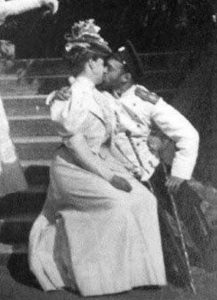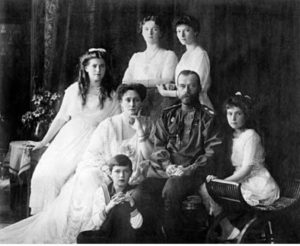The Last Czars (Series 1) Period Drama With Documentary Segments
This series tells the story of the demise of the Romanov dynasty under Czar Nicholas II.
Dramatised portrayals of actual events and people tend to leave viewers wondering about the extent to which the shows are historically accurate. This is not the case with ‘The Last Czars (Series 1).
A Unique Telling of the Story
The presentation of this story is unique in that it is told simultaneously in three different ways:
As Drama
Firstly, and predominantly it is told as a superbly cast and acted television drama.
As Documentary
Secondly, it is also presented as a documentary, by brief segments in which prominent historian offer illuminating commentary, additional information and explain why the presentation is historically accurate,
As an Additional Drama
Thirdly, an additional aspect of this story is presented in the bookends of this series and in short instalments. These segments are presented at intervals, as breaks from the main story.
These provide a dramatised account of the 1925 investigation of a young woman’s claim that she was Nastasia, (one of the Czar’s four daughters), and had managed to survive and escape the Imperial family’s brutal execution by the Bolsheviks. This mystery, we’re told, was only conclusively resolved in 1991 with the aid of Prince Phillip’s DNA.
Advantages of the Hybrid Presentation
While initially sceptical about watching such a hybrid show, I found that the documentary aspects did not interfere with my enjoyment of the drama. Not only did the documentary parts not detract from the drama, they enhanced it. At the same time the parallel dramatised story of the woman claiming to be Natasha provided a mystery element to a story, that did not itself have a mystery outcome.

Susanna Herbert and Robert Jack
The Series’ Focus
The story is primarily focused on the last Russian Czar and Empress, and on people like Rasputin who played a key role in their lives.
While focusing on individuals, the series gains significantly greater importance from the context of a self destructing 300 year old dynasty that rules over one sixth of the world.
Omnipotent and God Appointed Czar and the Public
The script succeeds in offering an explanation for why Nicholas II, a ruler with absolute power, who had commanded the love and support of his people, began losing their support, virtually from the day of his coronation.
The series depicts Nicholas II acknowledging being ill prepared to take over following his father’s sudden death in 1894. This, and his emphatic belief that God has appointed him, leaves him vulnerable to unwise advisors.

The Imperial Romance
Portrayed Idiosyncrasies
The series also notes some of the idiosyncrasies of the Imperial family household.
In an age of arranged marriages between the interrelated European royal households, Nicholas II married for love and remained in love until the family’s untimely and brutal elimination. His bride was Alexandra, a German born granddaughter of Queen Victoria.
The tenderness they display towards each other is strangely at odds with the cruelty or disinterest they display towards others.
The Imperial couple’s interactions with their five children, is presented as being caring and very progressive. This is notable in an age of pomp and ceremony and detachment from children (at least among the upper classes).

Ben Cartwright and Susanna Herbert.
The Mad Monk
As expected, a focal issue of the series is the almost mythical story of Grigori Rasputin, his relationship with Alexandra, and his influence on the Czar.
His story appears to be so far fetched that expert commentary was inserted to reassure viewers that what we’re seeing accords with available evidence. Rasputin’s involvement becomes a little more believable, when seen in the context of Alexandra’s religiosity and the family’s despair at Alexei, their only son and successor, having haemophilia, and Rasputin appearing to be the only one who could treat Alaxei.
Groups Opposed to the Czar
A politically interesting strand of the story relates to the roles played by the various groups opposed to the Czar or fighting for reforms. Here, the popular view of the role played by the communist party is convincingly challenged. The series may prove instrumental in promoting an understanding of the step including the establishment of the Duma in 1905, which led to the Czar’s forced abdication in 1917.

Nicholas II, Alexandra and their children.
Integral Glamour
The glamour, and opulence of the series’ settings, such as that of the Winter Palace in Petersburg, are integral to the story, and serve to further enhance its authenticity
Recommendation
To watch this series is to witness events that not only permanently altered the face of Russia, but determined the geo-political face of the world in the 20th century and beyond.